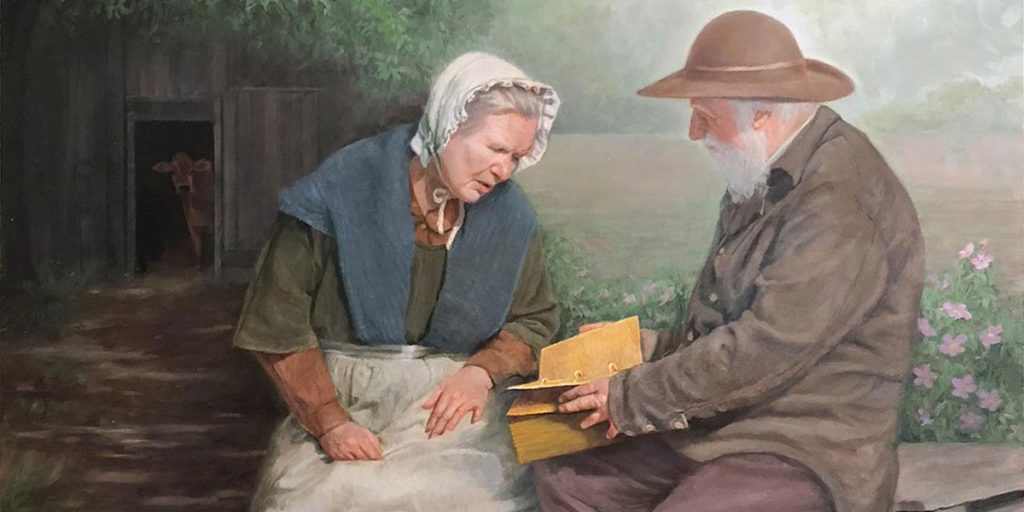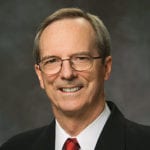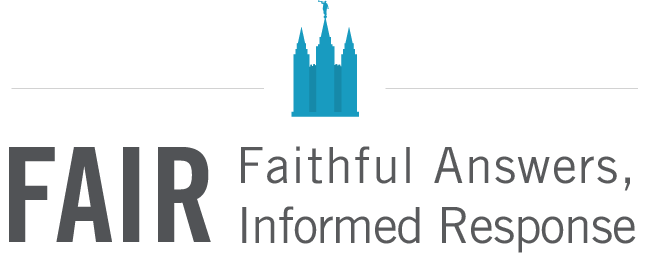by Dennis B. Horne

Some months ago I noticed the comments of a critic of the Church posted on a (highly critical) chat-site forum. This person wanted to engage with me in a debate about Church history and doctrine in hopes of causing doubt or loss of faith. His opening catch-phrase was clever, something like, “I assume he is a truth-seeker” (meaning me). This was meant to sound innocent; after all, for goodness sake, shouldn’t we all be truth-seekers?; especially Latter-day Saints?
At first glance I knew sophistry was in play. I realized that this question “are you/is he a truth-seeker,” was a wolf-question in sheep-question disguise. It was a way to ensnare, to set a trap. Something like “beware of the evil behind the smiling eyes.”
But it also gave me further occasion to ponder whether or not I am a truth-seeker, and if so, what kind of truth-seeker I am, and this caused me to engage in some introspection. Sometimes the deceptions of the enemy (Satan’s mortal servants and spokespeople who often don’t know they are) can prod thoughtful people into adjusting or refining their thinking and views, and such was the case for me. While I made no direct response to the subtle crafty critic then, I now offer some broader thoughts on the subject. [Read more…] about Seeking Truth

 Scott Gordon serves as President of FairMormon, a non-profit corporation staffed by volunteers dedicated to helping members deal with issues raised by critics of the LDS faith. He has an MBA from Brigham Young University, and a BA in Organizational Communications from Brigham Young University. He is currently an instructor of business and technology at Shasta College in Redding, California. Scott has held many positions in The Church of Jesus Christ of Latter-day Saints including serving as a bishop for six years. He is married and has five children.
Scott Gordon serves as President of FairMormon, a non-profit corporation staffed by volunteers dedicated to helping members deal with issues raised by critics of the LDS faith. He has an MBA from Brigham Young University, and a BA in Organizational Communications from Brigham Young University. He is currently an instructor of business and technology at Shasta College in Redding, California. Scott has held many positions in The Church of Jesus Christ of Latter-day Saints including serving as a bishop for six years. He is married and has five children.
 I thought about various kinds of transformations as I read Paul’s warning voice in
I thought about various kinds of transformations as I read Paul’s warning voice in  Tad R. Callister was serving in the Presidency of the Seventy and as a member of the Second Quorum of the Seventy when he was called as Sunday School general president. He has served in a number of Church callings including full-time missionary in the Eastern Atlantic States Mission, bishop, stake president, regional representative, mission president, and Area Seventy.
Tad R. Callister was serving in the Presidency of the Seventy and as a member of the Second Quorum of the Seventy when he was called as Sunday School general president. He has served in a number of Church callings including full-time missionary in the Eastern Atlantic States Mission, bishop, stake president, regional representative, mission president, and Area Seventy. Jasmin is the Web Architect and Content Manager for Book of Mormon Central. She administrates all the web properties of Book of Mormon Central and provides computer support for our users. She also serves as their chief Graphic Designer and the Peer Review Coordinator for the publication of KnoWhys. She enjoys creating new ways to visualize the Book of Mormon and enjoys managing Book of Mormon Central’s volunteers.
Jasmin is the Web Architect and Content Manager for Book of Mormon Central. She administrates all the web properties of Book of Mormon Central and provides computer support for our users. She also serves as their chief Graphic Designer and the Peer Review Coordinator for the publication of KnoWhys. She enjoys creating new ways to visualize the Book of Mormon and enjoys managing Book of Mormon Central’s volunteers.
 Huh? How could that be? I knew I’d just unplugged the phone.
Huh? How could that be? I knew I’d just unplugged the phone. Don Bradley is a writer, editor, and researcher specializing in early Mormon history. Don recently performed an internship with the Joseph Smith Papers Project and is completing his thesis, on the earliest Mormon conceptions of the New Jerusalem, toward an M.A. in History at Utah State University. He has published on the translation of the Book of Mormon, plural marriage before Nauvoo, and Joseph Smith’s “grand fundamental principles of Mormonism” and plans to publish an extensive analysis, co-authored with Mark Ashurst-McGee, on the Kinderhook plates. Don’s first book was The Lost 116 Pages: Reconstructing the Missing Contents of the Book of Mormon (being published soon).
Don Bradley is a writer, editor, and researcher specializing in early Mormon history. Don recently performed an internship with the Joseph Smith Papers Project and is completing his thesis, on the earliest Mormon conceptions of the New Jerusalem, toward an M.A. in History at Utah State University. He has published on the translation of the Book of Mormon, plural marriage before Nauvoo, and Joseph Smith’s “grand fundamental principles of Mormonism” and plans to publish an extensive analysis, co-authored with Mark Ashurst-McGee, on the Kinderhook plates. Don’s first book was The Lost 116 Pages: Reconstructing the Missing Contents of the Book of Mormon (being published soon). Matthew McBride is the Director of Publications for the Church History Department of The Church of Jesus Christ of Latter-day Saints. He is the author of A House for the Most High: The Story of the Original Nauvoo Temple, co-editor of Revelations in Context: The Stories behind the Sections of the Doctrine and Covenants, and a contributor to Saints: The Story of the Church of Jesus Christ in the Latter Days. He and his wife Mary and their four children live in American Fork, Utah.
Matthew McBride is the Director of Publications for the Church History Department of The Church of Jesus Christ of Latter-day Saints. He is the author of A House for the Most High: The Story of the Original Nauvoo Temple, co-editor of Revelations in Context: The Stories behind the Sections of the Doctrine and Covenants, and a contributor to Saints: The Story of the Church of Jesus Christ in the Latter Days. He and his wife Mary and their four children live in American Fork, Utah. Spencer W. McBride is a historian of early American history. He earned his PhD in history at Louisiana State University and is a historian and documentary editor at the Joseph Smith Papers Project. An expert in the intersections of religion and American politics, he is the author of Pulpit and Nation: Clergymen and the Politics of Revolutionary America (University of Virginia Press, 2017). He is currently writing a book on Joseph Smith’s presidential campaign (under contract with Oxford University Press).
Spencer W. McBride is a historian of early American history. He earned his PhD in history at Louisiana State University and is a historian and documentary editor at the Joseph Smith Papers Project. An expert in the intersections of religion and American politics, he is the author of Pulpit and Nation: Clergymen and the Politics of Revolutionary America (University of Virginia Press, 2017). He is currently writing a book on Joseph Smith’s presidential campaign (under contract with Oxford University Press).